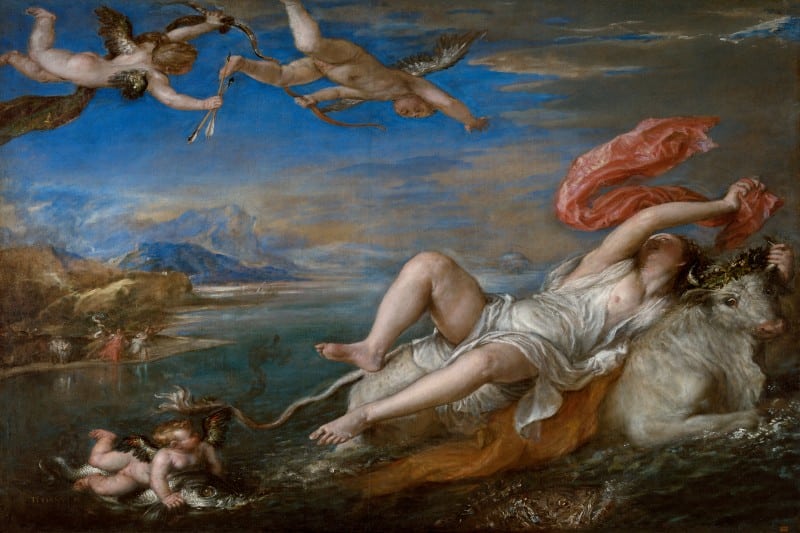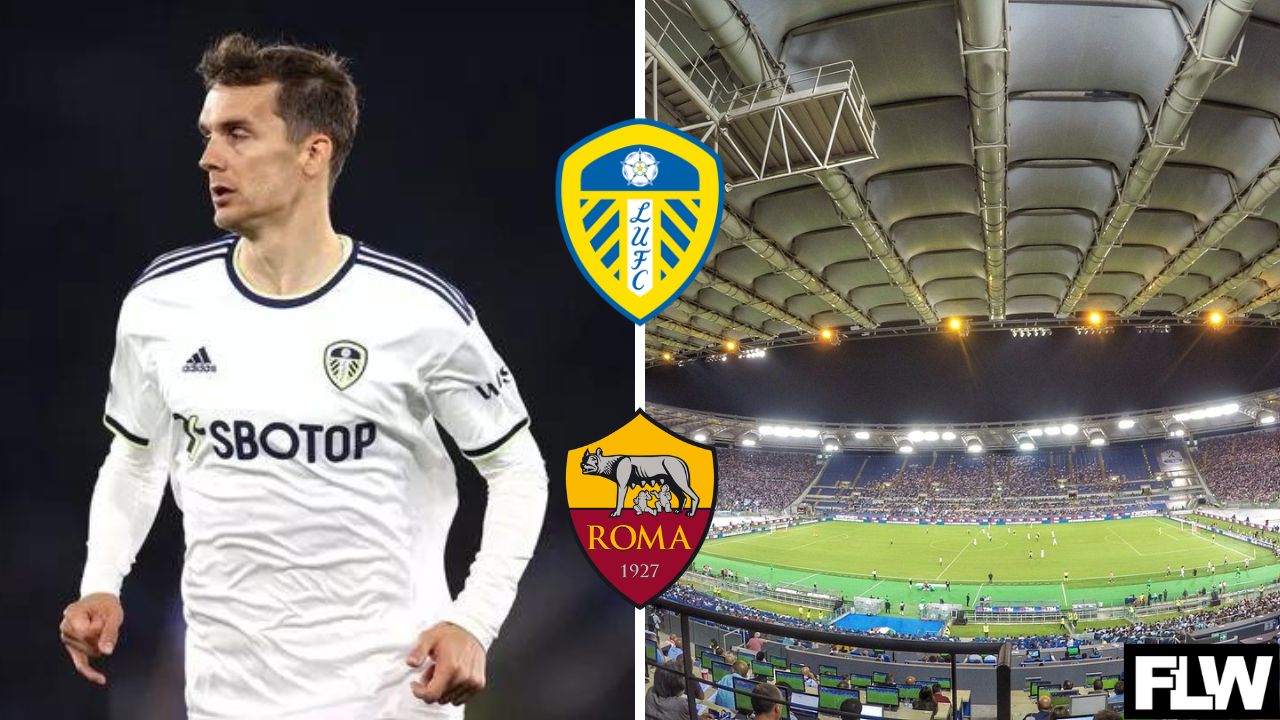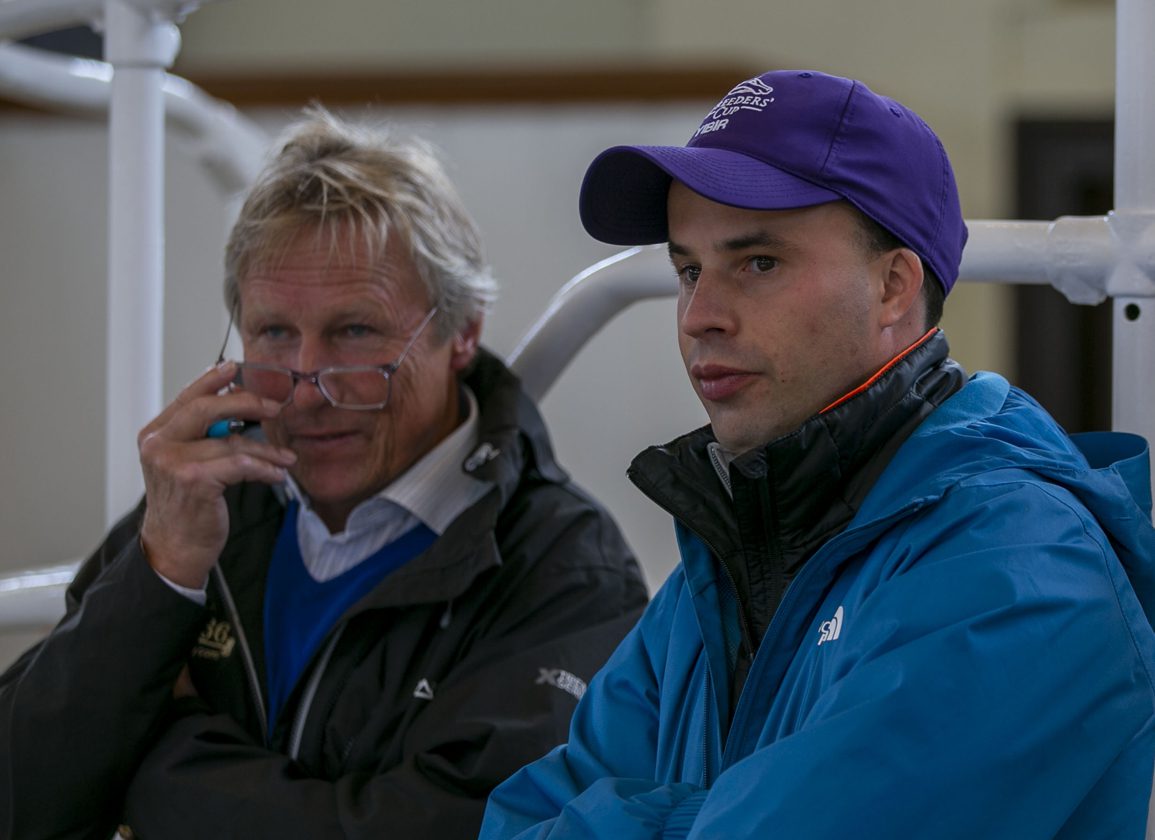Stop and Look: The Rape of Europa by Titian

The vibrant, luminous flesh, the sparkle of light on water, the rush of movement across this splendid canvas with its large-scale figures in violent motion are all features that mark it out as a high point in the history of European art. It’s one of a series of equally remarkable ‘poesie’, subjects taken from the Classical Roman poet Ovid’s Metamorphoses, commissioned about 1550 from the great Venetian painter Titian by Philip II of Spain.
Philip’s patronage of Titian, which extended over several years, was itself a milestone in the story of European culture. The artist provided Philip with six of these ‘poesie’, adding another a little later (it was one of his last works), and they are now scattered, though four are regularly visible in Britain, shared by London and Edinburgh. It’s sometimes forgotten that Philip himself was a for a short while King of England, having married Henry VIII’s daughter, Queen Mary Tudor, at Winchester Cathedral in 1554, so, apart from its current ownership of several of the canvases, England can claim a sort of historic family connection with the great series.
Thanks to the god Jupiter’s ravishment of Europa – he carried her off, disguised as a white bull, to Cyprus to be a queen – the lands round the Mediterranean took their name from her, so this picture doesn’t only illustrate part of a chain of mythological events: it also commemorates the foundation of an actual continent and its culture. What’s so extraordinary is Titian’s grasp of this whole nexus of interwoven significance: the disguised god, the abducted princess (Europa’s father was king of Sidon in Asia), the mountains of the old world disappearing from view with its inhabitants agitatedly signalling their distress on the receding shore, the allegorical life of the fluctuating medium in which the rape occurs: the putto astride the dolphin in wonderfully turbulent water (Titian must have studied the movement of water as carefully as Leonardo had done half a century earlier), the winged putti flying above with their arrows, symbolically tipped with lead (for flight) and gold (for lust).
These diverse elements are scattered across the huge landscape with a dynamism that thrusts them with a kind of centrifugal force towards the edges the canvas: it’s an almost Baroque use of space to propel the narrative forward or, perhaps, send it spinning into the future where in Titian’s time a large part of the continent of Europe is under the rule of the Habsburg monarch Philip II. Notice especially the way the complex poses of the two airborne putti, even though they fly far above the main group, lock into the overall rhythm of the design and complement the writhing form of Europa as she struggles to free herself while signalling to her friends on shore with that compositionally equally important rose-red scarf.
Almost as remarkable as all this is Titian’s handling of his medium as a vehicle for the story. He uses oil paint with astonishing freedom to depict palpitating flesh, the gamut of landscape – rocks, water, air and light – bound up in a vast perspective that incorporates large-scale figures and minuscule distant ones. Titian’s technical bravura anticipates seventeenth-century masters like Velazquez or Rembrandt, nineteenth-century Romantics and Impressionists like Constable and Monet: the whole history of oil painting in Europe is anticipated in a work that he had executed by the middle of the sixteenth century.
This is one of the poesie that, having come to England, didn’t remain here: it had been in France until the Revolution, then for much of the nineteenth century was owned by the Earls of Darnley, but in 1896 was sold to Isabella Stewart Gardner in Boston, in whose Florentine Palazzo it hangs today.
Write to us with your comments to be considered for publication at [email protected]













